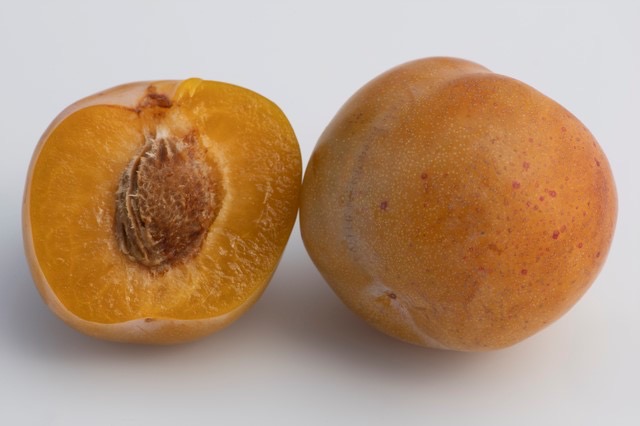Santa Clara CRFG held an in-person meeting on September 9; our first meeting at Emma Prusch park in the several years of Covid limitations! And it was grand to gather together with Andy Mariani speaking about European Plums!
While some might not think of plums as being a “rare” fruit, indeed in our area European plums are a rare treat. Those of us who grow the trees know how finicky they are, requiring significant chill hours, specific pruning, the correct pollinizers, and pollinators. This past winter provided the necessary chill hours, and the magic of an abundant sweet crop followed!
European plums are quite different from the “Asian” plums and the pluots we commonly find in markets. They are much smaller, and more fragile. Depending on where the plums are from, the name may be of French origin, or British. The family of European plums includes Mirabelles and various prunes as well as the famous Reine Claude or Green Gage plums.
Green Gage plums include many famous varieties, and they, like other European plums, are considered dessert plums. As one might think from that description, the fruits are very high in sugars and they are very fragrant. A hand-held refractometer tops out at 32 percent sugar in the juice, and some of the fruits might just peg that!
Andy discussed several varieties he has had varying degrees of success in growing and marketing. “Old” Green Gage or Reine Claude Doree are likely the same fruit. Both are self sterile and need a pollenizer, and are generally low yielding even with more chill hours. Bavay Green Gage is very similar but a bit later to harvest.
Over the years of his experience, Andy reports more success in production with small Mirabelle plums, and he especially recommends for home gardens the larger Golden Transparent Gage, which is self fertile. Some of the prune type European plums may be pollinizers for gage plums if flowering at the correct time. This would help with production of those elusive dessert plums, and they can also be quite tasty on their own rights if left to fully ripen on the tree. Imperial Epinuese, French 707 (French Improved), and Stanley are well known varieties.

For those who do grafting, it is good to be aware that though they are known as plums, the European varieties cannot be grafted onto an Asian plum tree. Various European varieties can be grafted together on the same tree, and the proximity may help with pollination.
These rare fruits are worth seeking out and may be worth trying to grow if you have space to allow an experiment, and you have a climate with warm days and cool nights. You must also have patience, since the tree will be slow to bear fruit, and may have many “off years” before everything clicks. But then when it does…. Oh my!